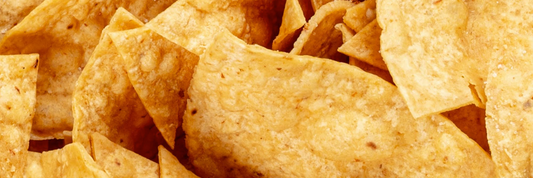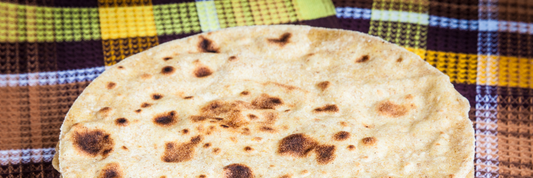When it comes to Asian cooking and savory flavor, soy sauce is a pantry staple but have you ever considered using tamari instead? While these two sauces may look similar, their ingredients, taste, gluten content, and cooking applications can differ significantly. In this article, we’ll explore the key differences between tamari vs soy sauce, helping you understand which one best suits your dietary needs and flavor preferences. Whether you're aiming for gluten-free meals or simply curious about the umami-packed world of Japanese and Chinese condiments, this guide breaks it all down.
Origins and Definitions
What Is Soy Sauce?
Soy sauce originated in ancient China over 2,500 years ago. It's traditionally made by fermenting soybeans and roasted wheat with salt and a mold starter (koji). Over time, this flavorful seasoning spread across East Asia, with regional variations emerging in Japan, Korea, Indonesia, and beyond. Today, soy sauce is a staple in global cuisines, prized for its umami-rich, salty-savoury character.
What Is Tamari?
Tamari is a Japanese-style soy sauce, developed as a by-product of miso paste production. When fermenting miso (which uses mostly soybeans), liquid naturally rises and is drained off, this liquid is tamari. Compared to soy sauce, tamari typically contains little to no wheat, making it a preferred option for gluten-free diets. It offers a smoother, less salty profile with deep umami notes.

Are Tamari And Soy Sauce The Same? Key Differences in Ingredients
Soy Sauce Ingredients
-
Soybeans
-
Roasted wheat
-
Salt
-
Water
-
Koji (fermentation starter)
Note: Most commercial soy sauces, especially Chinese-style, use both soy and wheat in nearly equal parts.

Tamari Ingredients
-
Primarily soybeans
-
Salt
-
Water
-
Koji
-
(Little or no wheat)
Some tamari brands (like San-J or Eden Foods) are brewed with 100% soybeans, making them suitable for gluten-sensitive or celiac consumers. However, always check the label, as not all tamari is strictly wheat-free.
Flavor & Texture Comparison
Soy Sauce
-
Flavor: Salty, sharp, slightly acidic
-
Texture: Thinner and more fluid
-
Use: Common in stir-fries, marinades, dipping sauces
Tamari
-
Flavor: Milder saltiness, rich umami depth, slightly sweeter
-
Texture: Thicker and smoother consistency
-
Use: Excellent in dipping sauces, dressings, and gluten-free recipes
Tamari’s higher soybean content contributes to a more balanced, rounded flavor, making it a favorite for dressings and sauces where you want to avoid overpowering saltiness.
Color & Appearance
-
Tamari is typically darker and more opaque than soy sauce, due to a higher soy content and often longer fermentation.
-
Soy sauce ranges widely:
-
Light soy sauce: reddish-brown, thinner, more commonly used in Chinese cooking.
-
Dark soy sauce: thicker, with added molasses or caramel coloring, used for deeper color and richer flavor in braises and stews.
-
Some commercial soy sauces may also contain caramel color or molasses to enhance appearance, something less common in traditional tamari.
Nutrition & Dietary Considerations
Gluten Content
-
Soy Sauce: Contains gluten (due to wheat). Not suitable for gluten-free diets.
-
Tamari: Usually gluten-free, but always verify the label.
Protein & Sodium
-
Tamari tends to have slightly more protein per tablespoon because it’s made with more soybeans.
-
Both sauces are high in sodium—ranging from 900 to 1,000 mg per tablespoon—so use in moderation or choose low-sodium versions when needed.
Additives and Preservatives
-
Tamari is often produced with fewer additives and preservatives, especially in traditionally brewed or organic versions.
-
Soy sauce, especially mass-market versions, may include preservatives, coloring agents, and flavor enhancers (like MSG).
When to Use Tamari vs Soy Sauce
Use Tamari if:
-
You're cooking for someone with gluten intolerance or celiac disease (check labels to confirm it’s gluten-free).
-
You want a smoother, less salty soy flavor.
-
You're preparing dipping sauces, dressings, or recipes where a rich, mellow umami depth is preferred.
-
You're aiming for clean-label or additive-free cooking.
Use Soy Sauce if:
-
You need a stronger, saltier, more assertive flavor.
-
You're preparing stir-fries, fried rice, noodles, or marinades that require bold, salty intensity.
-
You're cooking Chinese-style dishes where regular or dark soy sauce is traditionally used.
Use Liquid Aminos if:
-
You're following a vegan, low-sodium, or paleo-style diet.
-
You want a soy sauce alternative with no fermentation or lower sodium (especially with coconut aminos).
-
You prefer a milder, slightly sweet flavor in your recipes.
Tamari vs Soy Sauce vs Liquid Aminos: Comparison Table
| Feature | Soy Sauce | Tamari | Liquid Aminos |
|---|---|---|---|
| Main Ingredients | Soybeans, wheat, salt, water | Mostly soybeans, little to no wheat | Soy protein or coconut sap, water, salt |
| Gluten-Free? | Usually contains wheat | Typically gluten-free (check label) | Soy-based: usually GF, Coconut: always GF |
| Fermented? | Yes, traditionally brewed | Yes, longer fermentation | No (chemically processed or hydrolyzed) |
| Flavor Profile | Salty, sharp, slightly acidic | Richer, smoother umami, less salty | Milder, slightly sweet, less complex |
| Sodium Content | High (~900–1000 mg/tbsp) | Moderate to high (~800–950 mg/tbsp) | Lower (Coconut Aminos ~270 mg/tbsp) |
| Protein (per tbsp) | ~1 g | ~2 g | ~0.5–1 g |
| Best For | Stir-fries, marinades, sauces | Dipping sauces, gluten-free cooking | Vegan dishes, clean eating, low-sodium diets |
| Additives | May contain preservatives or caramel color | Fewer additives, especially organic versions | Minimal or no additives (depends on brand) |
| Popular Brands | Kikkoman, Pearl River Bridge | San-J, Eden Foods | Bragg, Coconut Secret |
| Shelf Life (opened) | 6–12 months (fridge) | 6–12 months (fridge) | 6–8 months (fridge) |
FAQs: Tamari vs Soy Sauce
Is tamari just soy sauce?
Tamari is a type of Japanese soy sauce made with little or no wheat, and with a milder, richer flavor.
Can I replace soy sauce with tamari 1:1?
Yes, tamari can be used as a 1:1 substitute in most recipes.
Is tamari healthier than soy sauce?
Tamari may have slightly more protein and fewer additives, but both are high in sodium. Healthier depends on your dietary needs.
Does tamari have gluten?
Most tamari is gluten-free, but check labels—some versions contain small amounts of wheat.
What type of soy sauce is best for sushi vs stir-fry?
Tamari is ideal for sushi dipping due to its mellow flavor. Regular soy sauce works best in stir-fries and marinades for its saltiness and intensity.
Choosing the Right Soy Sauce Bottle: Types, Materials, and Functionality
Conclusion
Understanding the differences between tamari vs soy sauce comes down to more than just taste, it's about ingredients, health considerations, and how each sauce complements different dishes. If you’re cooking for someone with gluten sensitivities or want a richer, less salty flavor, tamari is an excellent alternative. On the other hand, soy sauce delivers that sharp, classic saltiness familiar in many Asian cuisines. Depending on your recipe, dietary needs, and flavor goals, having both sauces on hand gives you greater control in the kitchen.







